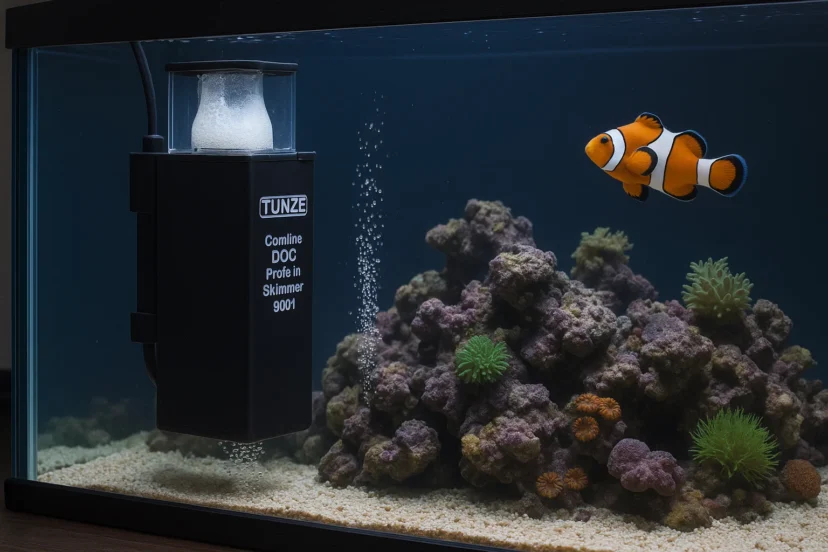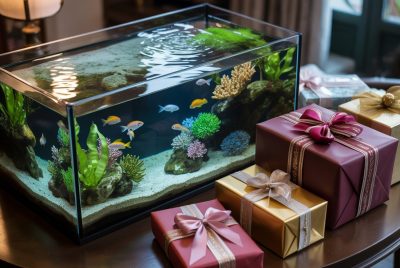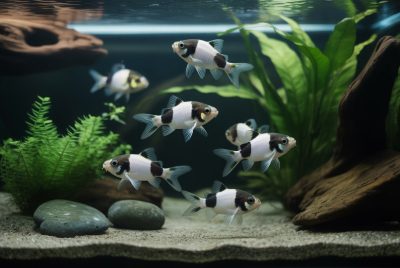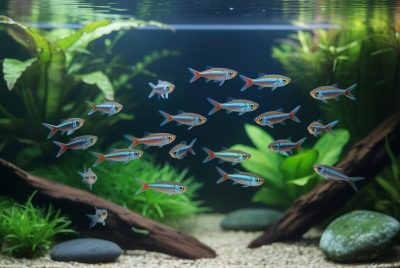Best Protein Skimmers for Nano Reefs
*We may earn a commission for purchases made using our links. Please see our disclosure to learn more.
My journey into the world of nano reef tanks began three years ago when space constraints in my apartment forced me to downsize from my 75-gallon dream tank to something more manageable. Like many reef enthusiasts transitioning to nano tanks, I quickly discovered that smaller doesn’t mean simpler—in fact, the opposite is true. Water parameters fluctuate more rapidly, waste accumulates more visibly, and the margin for error shrinks considerably.
The turning point in my nano reef journey came when I finally invested in a proper protein skimmer designed specifically for smaller systems. Before that, I struggled with nuisance algae blooms, deteriorating coral health, and the constant anxiety of wondering when the next parameter crash would occur. The right protein skimmer transformed my tiny underwater world from a constant struggle into a thriving ecosystem that visitors mistake for a professional installation.
Whether you’re just setting up your first nano reef or looking to upgrade your current filtration system, finding the perfect protein skimmers for your small-scale marine environment can mean the difference between constant maintenance headaches and a flourishing miniature reef that practically maintains itself. Let me guide you through what I’ve learned from both triumphs and costly mistakes.
“Effective protein skimming is perhaps the single most important factor for maintaining pristine water quality in confined reef environments. The smaller the system, the more critical efficient waste removal becomes.”
— Marine Aquarium Journal, Volume 42
Key Takeaways
- Space efficiency is crucial – Nano reef tanks have limited space, so look for skimmers with small footprints that can fit in tight filter compartments or hang-on designs that don’t intrude into the tank.
- Flow rate matters – The best nano protein skimmers balance adequate flow without creating too much turbulence in smaller systems.
- Noise level consideration – Since nano tanks are often placed in living spaces or bedrooms, quieter operation becomes more important than with larger systems in dedicated fish rooms.
- Ease of maintenance – Frequent but simple maintenance is preferable to complex, occasional cleaning procedures for nano tank stability.
- Adjustability features – Fine-tuning capability is essential for optimizing performance in the sensitive nano reef environment.
Recommended Protein Skimmers for Nano Reef Tanks
1. Tunze Comline DOC Protein Skimmer 9001
The Tunze Comline DOC Protein Skimmer 9001 is a powerful, ultra-compact solution for nano and small reef tanks up to 37 gallons. Engineered for efficiency, this skimmer removes organic waste before it breaks down, ensuring crystal-clear water and a healthy marine environment. Its quiet operation and energy-saving design make it ideal for hobbyists who value performance without sacrificing peace and space. Easy to install with a secure magnet mount, the 9001 fits neatly into most all-in-one aquarium compartments or sump areas.
- Space-Saving Design: Perfect for nano tanks with limited space.
- Quiet Operation: Runs smoothly with minimal noise, ideal for living spaces.
- Energy Efficient: Consumes low power while delivering strong performance.
- Limited Capacity: Best suited for tanks under 37 gallons.
- Microbubble Output: May release bubbles into the tank during break-in.
- Basic Adjustability: Fewer fine-tuning options compared to larger skimmers.
Why I love it: The Tunze Comline 9001 was a total game-changer for my nano reef. It’s compact, sleek, and fits perfectly in the rear chamber of my all-in-one tank. What really stood out was how quiet it is—I barely notice it’s running. And despite the small size, it pulls out some seriously gunky skimmate. German precision at its finest.
Key features:
- Ultra-compact design ideal for nano tanks up to 37 gallons
- Virtually silent operation—great for bedrooms or offices
- Energy efficient, running at only 2.5 to 4 watts
- Easy maintenance with magnetically attached collection cup
- Plug-and-play setup with strong magnet mount
Limitations:
- Slightly pricey compared to other small skimmers
- Not suitable for tanks larger than 37 gallons
- Needs at least 5″ of consistent water depth for optimal performance
Ideal for: Nano reef enthusiasts who want a low-maintenance, quiet, and reliable skimmer built with premium engineering.
2. Aquatic Life 115 Mini Internal Protein Skimmer
The AquaticLife 115 Mini Internal Protein Skimmer is a budget-friendly, space-saving solution for saltwater aquariums up to 30 gallons. With an efficient 8-watt needle-wheel impeller pump, this skimmer provides excellent air-to-water contact for effective removal of organic waste before it breaks down. Its compact size fits easily into most filtration compartments or nano setups, making it perfect for small reef tanks. Quiet operation and easy maintenance make this an excellent choice for beginners or those with limited space.
- Space-Efficient Design: Fits easily into nano tanks and rear filtration compartments.
- Quiet Operation: Minimal noise makes it ideal for home or office setups.
- Affordable Option: Delivers solid performance at a budget-friendly price.
- Limited Capacity: Not effective for tanks over 30 gallons.
- Basic Build Quality: Materials may feel less durable than premium models.
- Frequent Cleaning Needed: Smaller collection cup fills up quickly.
Why I love it: When I needed an affordable protein skimmers for my small quarantine tank, the AquaticLife 115 Mini impressed me with solid performance. Despite its budget-friendly price, it consistently produced dark, concentrated skimmate — a clear sign it’s doing its job well.
Key features:
- Great value for beginners or budget-conscious hobbyists
- Compact size fits snugly in tight filtration compartments
- Easy-to-remove collection cup for fast and hassle-free cleaning
- Adjustable air intake and water level for flexible setup
- Works effectively in tanks with as little as 4 inches of water
Limitations:
- Slightly noisier than premium protein skimmers
- Plastic parts feel less robust compared to higher-end models
- Requires more frequent adjustments and cleaning for peak performance
Ideal for: New reef keepers or those with nano tanks who want a reliable, inexpensive protein skimmer without complex setup.dget-conscious beginners or those setting up temporary/quarantine nano reef systems.
3. Innovative Marine Nuvoskim DC Protein Skimmer
The Innovative Marine Nuvoskim DC Protein Skimmer is specially designed for desktop all-in-one (AIO) aquariums from Innovative Marine’s Fusion and Concept series. Compact with a footprint of just 2.3" x 3.8", this skimmer features dual silencers and noise-reducing rubber feet for whisper-quiet operation. Its DC-powered needle wheel impeller pump ensures efficient protein removal, while the low-profile cup design and bubble plate diffuser optimize skimming performance. Easy to install and maintain, it offers a convenient “drop-in” solution for crystal-clear water in nano to midsize tanks.
- Quiet Operation: Dual silencers and rubber feet help minimize noise for peaceful tank environments.
- Space-Saving Design: Low-profile cup and small footprint make it ideal for desktop AIO aquariums.
- Efficient Filtration: DC-powered needle wheel impeller ensures effective protein skimming with minimal energy usage.
- Requires Break-In Period: The pump may take up to four days to reach full performance.
- Limited to Desktop Models: Only fits specific Innovative Marine Fusion AIO tanks.
- Higher Price Point: More expensive compared to other small skimmers on the market.
Why I love it: The thoughtful design of this protein skimmers makes maintenance a breeze. The quick-disconnect fittings are a lifesaver during water changes, and its consistent performance gave me peace of mind even when I was away from my tank for a few days.
Key features:
- Custom-designed for Innovative Marine desktop all-in-one nano tanks
- Quick-disconnect fittings simplify cleaning and maintenance
- Dual air silencers ensure impressively quiet operation
- Precise bubble control for optimal protein skimming
- Sleek, low-profile design fits seamlessly in modern nano setups
Limitations:
- Only compatible with specific Innovative Marine Fusion AIO models
- Replacement parts are less common than mainstream brands
- Air intake requires occasional cleaning for peak efficiency
Ideal for: Nano reef enthusiasts who want a reliable, quiet protein skimmer designed specifically for their Innovative Marine desktop aquariums.ith designer all-in-one systems who value aesthetic integration and easy maintenance.
4. Hydor Slim Skim Nano Internal Protein Skimmer
Efficiently maintain your aquarium with the Hydor Slim Skim Nano Internal Protein Skimmer, designed for tanks up to 35 gallons. This energy-efficient skimmer uses just 4 watts of power while providing effective filtration to ensure your tank stays clean. The patented Magnet-Suction Cup mounting system makes installation easy and secure, while the adjustable air control and foaming level give you full customization for optimal performance. Its compact, lightweight design fits seamlessly into your aquarium setup.
- Energy Efficient: Uses only 4 watts of power, saving on energy costs.
- Easy Installation: Includes a patented Magnet-Suction Cup mounting system for quick and secure setup.
- Adjustable Performance: Adjustable air control and foaming level for customized filtration.
- Limited to Smaller Tanks: Best suited for tanks up to 35 gallons, so not ideal for larger setups.
- Requires Proper Setup: Must always operate with the lid and air intake tube correctly positioned for optimal function.
- May Not Fit All Tank Styles: Its compact size may not be suitable for all aquarium types, especially those with tight spaces.
Why I love it: I was looking for reliable protein skimmers for my 30-gallon tank that wouldn’t take up too much space or spike my energy bill. The Hydor Slim Skim Nano hit all the marks — it’s incredibly compact yet effective, and its magnet-suction cup mounting system made setup a breeze. Plus, it uses barely any power, so I don’t worry about running costs.
Key features:
- Slim, rectangular design fits neatly inside tanks up to 35 gallons
- Patented Magnet-Suction Cup mounting system for easy, secure installation
- Adjustable air control and foaming level for precise skimming
- Lightweight acrylic construction, easy to handle and maintain
- Low power consumption — just 4 watts of energy
Limitations:
- Best for smaller tanks; not designed for larger aquarium setups
- Requires careful positioning of lid and air intake tube for optimal operation
- The compact size means the collection cup needs frequent cleaning
Ideal for: Aquarists with nano or small-medium tanks who want a space-saving, energy-efficient protein skimmer with straightforward installation.ef enthusiasts with extremely limited filtration space who don’t want to compromise on skimming performance.
Understanding Protein Skimmer Technology for Nano Reefs
When I first dipped my toes into the nano reef hobby, I made the critical mistake of treating protein skimming as optional. After all, I reasoned, weekly water changes should be enough to maintain water quality in such a small volume, right? Three algae outbreaks and one devastating coral crash later, I learned my lesson the hard way.
Protein skimmers work through a process called foam fractionation, where air bubbles attract organic compounds (proteins, amino acids, fatty acids, and other waste products) through a phenomenon known as adsorption. These waste-laden bubbles accumulate at the water’s surface and are collected in a cup before they can break down into harmful compounds like ammonia, nitrite, and nitrate.
What makes nano reef protein skimming particularly challenging is the delicate balance required. Too powerful a skimmer can create excessive flow in a small tank, stressing corals and micro fauna. Too weak, and waste accumulation quickly leads to parameter crashes in the limited water volume. Finding that sweet spot is both an art and a science.
Critical Features to Consider for Nano Reef Skimmers
Size and Placement Options
My first nano skimmer was technically efficient but physically too large for my tank’s filter compartment. I ended up with an awkward external setup that was prone to leaks and looked unsightly. Learn from my mistake and carefully measure your available space before purchasing.
Common placement options include:
- In-sump installation – Ideal if your nano tank has a separate sump system
- Hang-on-back (HOB) models – Perfect for tanks without dedicated filtration compartments
- In-tank designs – Work well but consume valuable real estate in already limited tank space
- Filter compartment models – Designed specifically for all-in-one nano tanks with designated filter areas
Bubbles and Noise Considerations
The microbubbles produced by protein skimmers can be both a blessing and a curse in nano tanks. While they help with oxygenation and waste removal, excessive microbubbles escaping into the display tank create an unattractive “soda water” effect and can irritate sensitive corals.
During my early nano reef days, I placed my budget skimmer too close to my bedroom desk, and the constant gurgling drove me to distraction during work calls. Consider the noise level carefully, especially if your nano tank is in a living space or bedroom.
Maintenance Requirements
One of the lessons I’ve learned from maintaining multiple nano reefs is that frequent, simple maintenance creates more stable conditions than sporadic, major interventions. Look for skimmers with:
- Easy-to-remove collection cups
- Accessible air intake valves for regular cleaning
- Simple disassembly procedures for occasional deep cleaning
- Clear visual indicators for optimal water levels
I once purchased a beautifully designed nano skimmer that required near-complete disassembly for cleaning. Despite its excellent performance, the maintenance headache eventually led me to replace it with a more user-friendly model.
Setting Up Your Nano Reef Protein Skimmer for Success
When I installed my first quality protein skimmer, I expected instant results. Instead, I encountered a frustrating break-in period with inconsistent performance. Had I understood the proper setup process, I could have saved myself considerable anxiety.
The Break-in Period
All protein skimmers require a break-in period as beneficial bacteria colonize surfaces and the unit finds its equilibrium. For nano skimmers, this process typically takes 24-72 hours. During this time:
- Expect inconsistent skimmate production
- Don’t make constant adjustments—give the unit time to stabilize
- Watch for overflow issues as the unit settles into its operating rhythm
I learned to be patient during this initial phase, resisting the urge to tinker constantly with settings.
Finding the Optimal Water Level
The water level in relation to the skimmer body is perhaps the most critical adjustment factor. Too high, and you’ll get watery, ineffective skimmate. Too low, and the skimmer may run dry or produce nothing at all.
I developed a simple approach: start with the water level slightly higher than recommended, then gradually lower it until you achieve a consistent collection of dark, tea-colored skimmate. This methodical approach saved me countless hours of frustration compared to my earlier trial-and-error attempts.
Fine-Tuning Air Flow
The amount of air introduced into your skimmer dramatically affects its performance. More air generally means more waste removal, but also potentially more noise and bubbles escaping into your display tank.
My personal preference for nano tanks is to start with a lower air flow setting and gradually increase it until I find the sweet spot where waste removal is effective without creating a bubble storm in my display area.
Common Challenges and Solutions
Skimmer Not Producing Skimmate
This was my first major frustration with nano skimmers. After anxiously waiting for my new unit to start producing waste, the collection cup remained disappointingly empty. The solution was rarely a defective unit but usually one of these fixable issues:
- Water level adjustment needed – Often just a minor tweak resolves the problem
- Air intake blockage – Regular cleaning prevents this common issue
- Insufficient tank bioload – Brand new tanks sometimes don’t produce enough waste to skim effectively
- Chemicals or additives – Some coral foods and water treatments can temporarily inhibit skimming
Overflow Issues
The opposite problem—too much watery skimmate overflowing the collection cup—plagued me during my early nano reef days. I’d wake up to puddles of salt water on my furniture, causing both water parameter fluctuations and domestic friction!
To prevent overflows:
- Set the water level slightly lower than you think necessary
- Check new skimmers frequently during the first few days
- Consider models with overflow protection features
- Install the skimmer where occasional drips won’t cause damage
Microbubble Storms
Few things are more frustrating than a beautifully aquascaped nano reef suddenly filled with tiny bubbles that refuse to dissipate. After several such incidents, I developed this troubleshooting approach:
- Check and clean the bubble plate/diffuser
- Ensure the water level inside the skimmer body is correct
- Look for air leaks in tubing connections
- Add a small section of filter floss at the skimmer output as a bubble trap
- Allow newly installed skimmers 24-48 hours for microbubbles to subside
Maintenance Best Practices
The compact nature of nano tanks means waste concentration builds more quickly than in larger systems. Regular maintenance becomes even more critical for sustainable success.
Daily Checks
A quick 30-second daily check prevented countless problems in my nano reef journey:
- Verify skimmate is being produced
- Check for appropriate skimmate color (tea to coffee)
- Ensure water levels remain consistent
- Listen for unusual sounds indicating pump issues
Weekly Cleaning Routine
My Sunday morning ritual includes this simple maintenance procedure:
- Remove and empty the collection cup
- Rinse with freshwater (never soap or chemicals)
- Wipe the neck of the skimmer to remove film buildup
- Check and clean air intake valves if necessary
- Inspect for salt creep that might affect performance
Monthly Deep Cleaning
Once a month, I perform a more thorough maintenance session:
- Disassemble major components according to manufacturer instructions
- Soak parts in a 10% vinegar solution to dissolve calcium deposits
- Gently clean the impeller and needle wheel if applicable
- Check O-rings and gaskets for wear
- Verify all connections are secure before restarting
This routine has dramatically extended the lifespan of my nano skimmers and maintained peak performance.
Optimizing Protein Skimming in the Complete Nano Reef System
A common mistake I see among fellow nano reef enthusiasts is treating the protein skimmer as an isolated component rather than part of an integrated system. Through experience, I’ve learned that optimizing skimmer performance requires considering how it interacts with other filtration elements.
Complementary Filtration Options
My most successful nano reef setup combines protein skimming with:
- Mechanical filtration (filter floss or sponge) to trap larger particles before they enter the skimmer
- Chemical filtration (activated carbon or resin) to remove compounds the skimmer can’t address
- Biological filtration (live rock, ceramic media) to process ammonia and nitrites
Finding the right balance among these elements took considerable experimentation but resulted in remarkably stable water parameters.
Feeding Strategies
I quickly discovered that my feeding habits directly impacted skimmer performance. Heavy feeding sessions would temporarily overwhelm even the best nano skimmers. I adapted by:
- Feeding smaller amounts more frequently
- Turning off the skimmer during feeding and for 30 minutes after
- Targeting food delivery to minimize waste
- Using high-quality foods that produce less waste
These adjustments not only improved skimmer effectiveness but also enhanced overall coral health and coloration.
Water Flow Considerations
Proper water flow is essential for directing detritus toward your filtration system. After several iterations, I found that creating a gentle circular flow pattern in my nano tank significantly improved skimmer performance by ensuring waste particles remained suspended long enough to be captured.
The Impact of Effective Protein Skimming on Coral Health
The visual transformation of my nano reef after upgrading to a quality protein skimmer was nothing short of remarkable. Within weeks, I observed:
- Improved polyp extension in LPS corals
- More vibrant coloration, particularly in SPS varieties
- Reduced algae growth on rock and sand
- Clearer water with enhanced light penetration
- More active fish behavior
These changes weren’t just aesthetic—they represented a fundamentally healthier ecosystem with more stable parameters and lower oxidative stress on the inhabitants.
Conclusion
The journey to finding the perfect protein skimmer for a nano reef tank involves understanding both the technical aspects of skimmer operation and the unique challenges of smaller marine systems. Through my own trials and errors, I’ve discovered that successful nano reef keeping isn’t about applying big-tank methodologies on a smaller scale, but rather adopting approaches specifically tailored to the concentrated environment of a nano system.
Investing in a quality protein skimmer designed specifically for nano applications has consistently proven to be the single most impactful equipment decision for maintaining water quality and overall system health. When properly selected, installed, and maintained, these specialized filtration devices transform the nano reef experience from a constant struggle against parameter instability to a rewarding journey of coral growth and marine discovery.
Remember that the “best” skimmer ultimately depends on your specific tank configuration, livestock selection, and personal maintenance preferences. By considering the factors outlined in this guide and learning from both my successes and failures, you’ll be well-equipped to make an informed decision that supports your unique nano reef vision.
Frequently Asked Questions
How often should I clean my nano reef protein skimmer?
For optimal performance, empty the collection cup every 1-3 days depending on bioload, wipe the neck weekly to prevent film buildup that reduces efficiency, and perform a more thorough cleaning of all components monthly using a vinegar solution to dissolve mineral deposits that accumulate on moving parts.
Can I run a protein skimmer 24/7 in a nano reef?
Yes, protein skimmers are designed for continuous operation, and consistent running actually improves performance by maintaining stable bubble production. However, many experienced nano reef keepers temporarily turn off their skimmers during feeding to prevent immediate removal of beneficial food particles, then restart them 15-30 minutes afterward.
Why is my skimmer producing only clear water instead of dark skimmate?
Clear or very light skimmate typically indicates that either the water level in the skimmer needs adjustment (usually lowering), the tank bioload is insufficient to produce waste for skimming, or certain additives or medications are interfering with the skimming process. Start by making small water level adjustments and allow 12-24 hours to see changes before making further modifications.
Is a protein skimmer absolutely necessary for a nano reef tank?
While some successful nano reef tanks operate without protein skimmers through aggressive water change schedules and minimal bioload, a quality skimmer significantly improves water quality stability in these sensitive small systems. The smaller the water volume, the more dramatic parameter swings can be, making preventative waste removal via skimming especially valuable for maintaining consistent coral health.
How do I know if my protein skimmer is the right size for my nano tank?
A properly sized nano skimmer should produce a modest amount of dark skimmate daily without causing excessive turbulence in the display tank. If your skimmer produces excessive watery skimmate or requires constant adjustment, it may be oversized. Conversely, if water quality issues persist despite good maintenance and operation, the skimmer may be undersized for your bioload. Most manufacturers provide tank size ratings, but these assume average bioload—heavy coral stocking or numerous fish may require stepping up to the next size rating.















